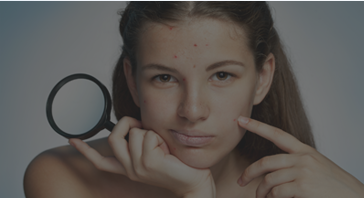
ACNE TREATMENT
Acne is typically considered the bane of puberty. However, it can affect people even into their 30s and 50s. The scars and marks left behind can make your skin appear severely flawed and can take away your confidence. Acne occurs when the skin overproduces sebum, a natural oil secreted by the skin to protect itself from drying out. And since the oil glands are connected to hair roots, sebum can get trapped in the follicles and harbor dead cells, bacteria, and other debris. As such, acne develops when your body tries to get rid of the impurities. When there’s a breakout, your skin is left with acne marks or hyperpigmentation. Severe acne can damage the lower layers of skin and cause the formation of acne scars. Even worse, acne can cause keloids, which is a raised scar tissue that develops from excessive collagen produced when the skin heals after the breakout.
PRP therapy can help stimulate the production of collagen and elastin plumping up skin. Patients have reported lighter appearing scars after PDP treatment.
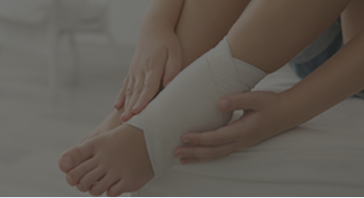
ANKLE PAIN
The ankles consist of a complex structure of ligaments, muscles, tendons, and bones that provide stability but also makes them prone to injury and sprains. What’s more, ankles are subjected to considerable weight-bearing and strain each day, and as a result, they’re exposed to damage and instability. Some of the most common causes of ankle pain are overuse injuries, fractures, tendonitis, arthritis, sprains, heel spurs, torn ligaments, gout, and bursitis. Ankle pain is often accompanied by inflammation and loss of mobility.
Because ligaments in the ankle receive less blood supply compared to other tissues, they’re less likely to heal on their own. As such, the joint will swell in order to bring healing cells to the joint. In many cases, however, the body doesn’t deliver enough platelets to totally heal the injured area. By concentrating platelets and its growth factors in a small amount of plasma volume, and when injected directly into the injured site, it tries to stimulate healing and decrease inflammation. Many patient try PRP for ankle pain in an effort to avoid surgical procedures, avoid medications and get back on their feet, experience increased tendon strength, increased range of ankle motion as well as long-lasting pain relief.

BODY TREATMENT (STRETCH MARKS, SCARS, & BLEMISHES)
PRP body treatments have been used to help you with a wide range of dermal conditions, including scars, blemishes, and stretch marks. Any kind of injury to the skin results in uneven healing and scarring. The new tissues tend to heal in an irregular pattern to replace the original neat, even matrix of your skin. Stretch marks, on the other hand, develop when the dermis expands beyond the limits of its elasticity. As a result, the middle layer of skin (dermis) tears, allowing the deeper layer of skin to show through. There are many topical treatments in the market, but they hardly affect severe scars, stretch marks, or blemishes. Depending on your condition PRP may be a good option to try.
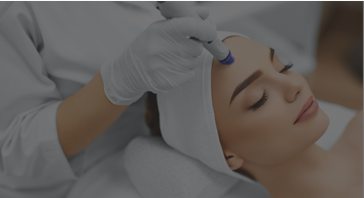
FACE THERAPY (FACIAL MICRONEEDLING)
Fresh, glowing gives the face and body a youthful appearance. A routine skincare regimen helps protect skin from sun damage, scars, fine lines, and wrinkles. But as time passes, the production of collagen slows down, and topical treatments become ineffective in rejuvenating the skin. So, when you want to smoothen and tighten the skin, microneedling with PRP may be the right option.
The first procedure is microneedling. It involves the use of tiny needles to create tiny micro-injuries or channels on the skin. The micro-injuries stimulate the body’s elastin and collagen production- the substance that provides strength and flexibility to skin. And when PRP is injected into the treatment area, it bathes the cells to try and accelerate the healing process. Microneedling with PRP can help rejuvenate the treated area of skin for a smoother, firmer, and more youthful appearance. This therapy can be used in different areas of the body, including the face, arms, hands, neck, décolleté, abdomen, and legs.
Patients have reported Microneedling with PRP:
- Gives the skin a fresh glow
- Evens skin tone
- Gives the skin a smoother and firmer texture
- Reduces the appearance of large pores
- Helps lighten sunspots
- Improves the appearance of fine lines and wrinkles
- Reduces spider veins and broken capillaries
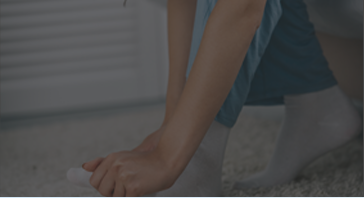
FOOT PAIN
The foot is made up of several structures and tissues, including bone, tendons, joints, ligaments, and muscles, any of which may be a source of pain. Many cases of foot pain can be traced to lumbar or sacral nerves that serve our extremities. Inflammation or damage to these nerves is perceived in the mind as pain. Foot pain can also be caused by trauma, injury, arthritis, gout, tendonitis, plantar fasciitis, bunions and blisters, diabetic peripheral neuropathy, bursitis, hammer toe, tarsal tunnel syndrome, complex regional pain syndrome, or repetitive motions that lead to overuse. Most problems that cause foot pain tend to persist if left untreated. This may lead to a lack of mobility and inability to perform the activities of normal daily life over time.
PRP therapy has helped patients treat foot pain as they stimulate and restart the inflammatory cascade, which enhances the healing process. The PRP serum contains platelets, growth factors, cytokines, mesenchymal stem cells, and other healing elements that can help support pain relief. These healing elements also help support the production of collagen and healing factors in the injured area.
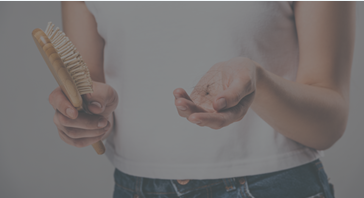
HAIR LOSS/RESTORATION
Through the ages, thick hair has been associated with good health, beauty, and youth. So when people experience hair loss, they often feel depressed and experience a loss of self-esteem. Premature balding or hair loss can be caused by hormone imbalances, iron deficiency, medication, and digestive imbalances. In many cases, however, premature balding or hair loss is due to genetic factors beyond your control.
At Joint PRP, we use Platelet Rich Plasma (PRP) therapy as an aide in hair treatment option. The PRP solution contains platelet-rich fibrin and growth factors that can trigger natural hair growth or thickness for some patients. PRP has helped some patients achieve richer and fuller hair. If you are thinking about hair transplant PRP may be a good first option.
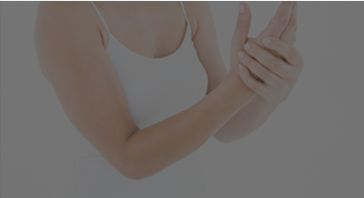
HAND PAIN
Our hands are in constant motion and often come into contact with harsh environmental conditions, making them susceptible to many injuries and painful conditions. Hand pain can come from carpal tunnel syndrome, arthritis, and injuries. Wear and tears on the hands are becoming increasingly common as we use more hand-held devices and keyboards. Placing more strain on our hands can cause them to wear down over time, making it difficult to accomplish simple, everyday activities.
PRP therapy can be helpful in treating various causes of hand pain. That is because it contains a high concentration of platelets, growth factors, and other healing elements that can assist stimulation of tissue repair. This can be highly beneficial if hand pain is caused by improper healing of tissues after injury. PRP injections also attempt to increase nutrients and oxygen to the treated area. In case of arthritis, PRP attempts to support pain relief in eroded cartilage as well as worn out buffering agents. Patients who have seen pain relief with PRP injections usually reports increased function.

PLANTAR FASCIITIS
Plantar fasciitis is one of the most common conditions causing pain in the heels. This condition is generally the result of the inflammation and strain of the plantar fascia- a fibrous band of tissue that is attached to the heel bone and runs across the sole of the foot. Strain or excess stretching can cause tears in the tissue leading to inflammation and pain. The pain is typically insidious in onset, usually occurring after jumping from a height or missing a step. The pain worsens over time and is often reported to be more severe in bare feet.
For any tissue to heal, there should be an infusion of blood that brings in healing platelets, oxygen, and compounds that boost the production of new tissue. However, studies have shown that plantar fascia has low blood vessels, which means that it receives a low supply of blood. Also, the tissue band does not receive enough fresh cells needed to repair torn fibers. PRP has helped patients with Plantar Fasciitis in the past. In addition to supplying the area with platelets, PRP also sends signals to the body that healing is needed in the area. PRP also initiates the building of new collagen fibers, so the area heals quickly.

ROTATOR CUFF INJURY
The rotator cuff comprises four major muscles and tendons that stabilize the bone of the upper arm within the shoulder joint and support your arm’s full range of motion. Repetitive arm motions, a hard fall, or problems with the structure of your shoulder can all result in rotator cuff injuries. Common injuries include tendinopathy/tendinitis and rotator cuff tears. These injuries can cause pain and restrict a person’s arm movement enough to affect their ability to perform daily activities. Previously, patients had to rely on pain management to help them deal with a rotator cuff injury (without facilitating repair or healing) or by undergoing invasive surgery. Today, regenerative treatments, such as PRP therapy, offer an exceptional alternative.
PRP is a procedure that can help with rotator cuff injuries, improving pain and helping with strength and shoulder function without the risks and expense associated with surgical treatment. The PRP serum is collected by taking your blood and spinning it in a centrifuge to separate platelets and other elements of blood. The doctor will then re-inject the PRP serum around the injured muscle and tendon using ultrasound guidance. The platelets will attempt to release growth factors that facilitate the body’s natural healing mechanisms. By concentrating platelets, the dose delivered to the injured tissue is eight times higher than what your body would deliver.

TREATMENT FOR ED (ERECTILE DYSFUNCTION)
Difficulty achieving or maintain an erection can have a significant impact on a man’s self-esteem, relationship, and overall well-being. Common causes of erectile dysfunction (ED) include smoking, excessive intake of alcohol, obesity, stress, hormone imbalances, side effects of medication, medical conditions, injuries, and effects of bladder or prostate surgery. If you’re looking for a treatment option that can revive intimacy in your relationship, PRP has been used with success for some patients.

WRIST PAIN
Pain from wrist injuries like osteoarthritis and carpal tunnel syndrome can make even the simplest tasks and activities daunting. Common causes of wrist discomfort and immobility include:
- Carpal Tunnel Syndrome
- Injuries like fractures, strains, and sprains
- Repetitive movements
- Scaphoid fractures of a bone on the thumb
- Rheumatoid arthritis
- Osteoarthritis
- Kienbock’s disease
At Joint PRP, we understand how difficult everyday life can be when you have a reduced range of motion and pain. PRP therapy can help boost your body’s natural healing process. When the PRP serum is injected around damaged tissues of the wrist, its healing compounds can stimulate a healing cascade of cells. The cells will then work to repair the causes of pain-causing conditions.
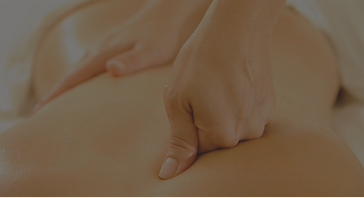
TISSUE HEALING (TENDONS, LIGAMENTS & MUSCLES)
Athletes and normal, everyday people can develop inflammation and pain in a hand, knee, shoulder, arm, hip, elbow, or foot when performing a repetitive task. If this is you, then chances are, you have a tendon, ligament, or muscle injury. When these tissues are injured or stressed, they respond by becoming swollen, stiff, and painful. You might even see some redness or have a sensation of warmth coming from the affected area. You might find that movement seems to relieve the symptoms, but repetitive motions could worsen the injury by not allowing the tissue to rest and heal. If an injured or damaged tissue fails to heal with physical therapy and rest, it might be time to ask about PRP.
PRP therapy can help aide in the repair of damaged tendons, ligaments, or muscles by stimulating swelling instead of soothing it initially but later has an anti-inflammatory affect which can alleviate pain.

BACK PAIN
According to the Mayo Clinic, up to 80% of American have or will have back pain as an adult. Back pain can be debilitating, keeping you from being effective at work. It can also limit your physical activity and make it difficult to enjoy time with loved ones. Back pain can be the result of a fall, improper movements, or lifting heaving objects incorrectly. It can also be caused by underlying medical issues such as muscle strain, arthritis, spinal stenosis, osteoporosis, or herniated/ruptured discs. You’ve probably tried different treatment options in your quest to get rid of back pain, but the pain has always returned. You may even be considering surgery to put an end to it all. However, PRP therapy can be a good option.
The PRP serum used contains concentrated platelets and is delivered directly to the affected area. PRP contains platelets, growth factors, cytokines, and mesenchymal stem cells that help in the healing of tissues. These elements support the bodies healing of ligaments, muscles, and tendons – essentially initiating a repairing mechanism that supports the body to heal itself.
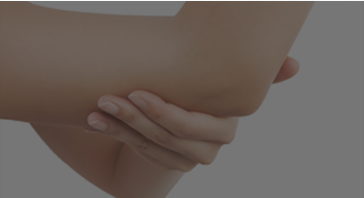
ELBOW PAIN
An elbow injury that causes severe pain can prevent you from being able to do everyday activities. You can injure your elbow even if you’ve never played tennis in your life. Elbow pain can be caused by damage to ligaments, muscles, tendons, or bones that are part of this joint. It can also be a result of improper use of joint or repetitive motion, causing wear and tear. Some types of elbow injuries include distal biceps, tennis blow, triceps ruptures, and elbow instability.
PRP for elbow pain has been used in helping alleviate pain and discomfort. The PRP serum contains a concentration of platelets, cytokines, growth factors, chemokines, and other important healing elements. The growth factors help support the production of new collagen, which forms the basis of tissues. This can improve the body’s natural healing systems. While some other treatments simply work to mask the pain, PRP attempts at long-lasting relief using your own bodies natural healing mechanism.

HIP PAIN
Hip pain can stem from a variety of causes, ranging from injuries such as falls and accidents to age-related conditions like osteoarthritis. Other active diseases, such as lower back pain, can lead to hip flexor pain. Hip pain can strike both inactive and active adults of any age, although it’s a common complaint among the elderly. When the discomfort is on the outside of your hip, there could be a problem with tendons, ligaments, or muscles. But if the pain is located in the groin area, it could be emanating from inside the joint. No matter the cause of your hip pain, you need an effective treatment that will keep you mobile and help you maintain your active lifestyle. PRP injections can be a good option.
The serum used in PRP therapy attempts to stimulate the body to repair worn-out cartilage and synovial fluids. The serum contains platelets, growth factors, cytokines, mesenchymal stem cells, and chemokines that usually signal the body that the area needs healing. Once the serum is injected into the hip it causes temporary inflammation in the treated area. Whether the pain is caused by trauma or age-related erosion of the hip joint, PRP can be worth trying before surgical options are explored.

SHOULDER PAIN
The shoulder is the most flexible and most complex joint in the body. It has a greater range of motion due to a delicate relationship of the muscles, bones, and tendons, which comprise the shoulder. It also has small sacs or the bursae, which are filled with fluid that cushions the tissues and bones, absorbing energy from movements. The shoulder is a ball and socket joint where the top of your forearm bone (humeral bone) represents the ball and fits into the rounded glenoid of the shoulder blade, which is the socket. Due to the complex structure of the shoulder, there are many types of injuries that can affect the shoulder, including:
- Bursitis or tendonitis
- Tears in the tendons
- Shoulder arthritis
- Shoulder dislocation
- Fractures
- Labral tears
PRP therapy has helped many patients including atletes with shoulder issues. Using your own blood, we derive concentrated platelets and then re-inject them around the affected tissues of the shoulder. When in contact with the injured area, platelets will release growth factors that can promote pain relief and healing of tendons, ligaments, muscles, and cartilage.
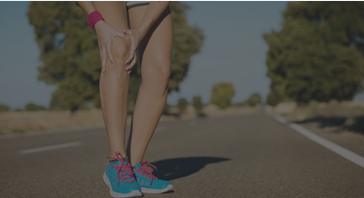
KNEE PAIN
The knee is a modified hinge joint consisting of cartilage, tendons, ligaments, and bones. Knee injuries are common and can be very debilitating. Knee pain can make it difficult to walk comfortably or enjoy your favorite activities. And when a patient suffers from chronic pain, swelling, instability, stiffness, and popping that limits their ability to perform some movements, it can be a sign of a serious underlying condition. The cause of knee injuries and pain fall into three categories:
- Chronic conditions:Osteoarthritis, Degenerative Joint Disease etc.
- Sudden injury: sprain ligament or tendon
- Overuse injury: Tendonitis, bursitis, IT band syndrome
After a thorough evaluation of your condition, we may be able to pinpoint the exact cause of your knee pain. PRP uses a concentrate of your own platelets and other growth factors to try and stimulate the natural healing process in tissues. Before resorting to knee surgery, you may find PRP therapy to be a viable option that may be able to:
- Reduce osteoarthritis symptoms
- Accelerate wound healing
- Improve muscular and joint pain




